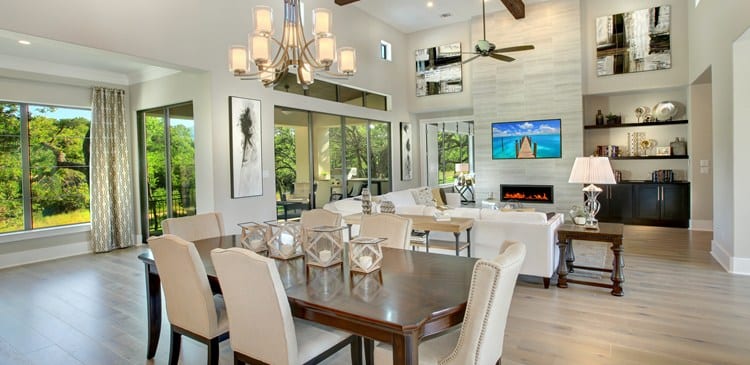
Photo: GettyImages
Keeping up with changes in the home interior industry has contributed to our leaving a larger carbon footprint behind.
Items we discard can end up in a landfill, which increases the amount of harmful substances in the environment. We also often use products in our homes that include harsh chemicals that can pollute our air. Going eco-friendly in the home not only helps our environment but our health, too.
Luckily, many great eco-friendly items and products have surfaced in the home interior market. S. Lee Wright, a professional interior architect, says, “Everyone ought to adjust their homes to be healthy and incorporate eco-mindful design into all areas.” Going eco-friendly “can be done in one or two ways: either as a minor modification, decoration or adjustment to your home or a more-thorough aspect of a home renovation.”
Whether you are going small or going big, any eco-friendly choice you make has a positive effect on the Earth. As you design or decorate your home, keep these eco-friendly ideas in mind:
1. Recycling and Reusing
For slight changes around their home, homeowners can opt for recycled home fixtures. Interior decorator Bee Heinemann says, “Repurposing or buying used is an excellent way to reduce your carbon footprint. Always try to think of ways to refinish or repurpose old furniture before you simply discard it and buy new. This isn’t only good for the environment but can help your bank account as well. Shopping consignment furniture stores is also a great way to find new treasures to refresh your home.”
Look through magazines or Pinterest for ideas on how to reuse furniture and home fixtures. Get a little crafty and turn something old into something that’s perfect for you and your home!
2. Conserving Energy
There are many ways to save on energy within a home. Besides being kinder to the environment, a perk to using eco-friendly features is that they will help you save money on your monthly bills.
Interior designer Amy Samuel recommends a Solatube tubular skylight as a way to reduce using electric lighting during the day. “They harvest sunlight from a dome on the roof and transfer it down through highly reflective tubing that runs through the attic and comes out at ceiling level through a diffuser,” she explains. “Once installed, there is no need to use electric lights during the day, thus saving money and reducing the carbon footprint … There’s also a brand-new version that has an integrated nightlight in it that is solar powered.”
Besides those amazing skylights, homeowners can also install features such as water-conserving toilets, smart thermostats and UV-ray blocking window features. There are so many great energy-efficient features that are available to us now, so why not try them out?
3. Swapping Toxic for Healthy
Unfortunately, a lot of home décor that we use contain harmful substances. Part of going green is going toxin-free.
Heinemann says to always consider eco-friendly options when choosing carpeting and rugs. “Most carpeting contains volatile organic compounds, or VOCs, which are emitted into the air as gases that can cause health issues, allergic reactions, headaches and skin rashes. Area rugs can contain the same chemicals, so when using rugs to decorate always consider eco-friendly options. These rugs can be made from natural animal and plant fibers and contain no harmful dyes or chemicals.”
VOCs are also found in paint, candles, window treatments and many other things we use to decorate our homes. Look for “Low VOC” items when shopping for these items.
4. Living a Green Lifestyle
Homeowners can make small changes beyond design and décor to reduce their carbon footprint and live a healthier lifestyle. Marla Esser Cloos, a green-home coach, says that “living green has to be a blend of the stuff you buy and the things you do.”
You can easily incorporate eco-friendly techniques into your everyday lifestyle. For example, you could get handy and learn how to repair items instead of replacing them. You could also get closer to nature and compost your discarded food or grow your own food in a backyard garden.
“Using eco-friendly/green/sustainable products, items and practices in a home is the route to a healthier, safer, more comfortable home,” says Cloos.
Consider making your home eco-friendlier and feel the difference it makes in your life. Encourage your friends and family to do the same, and together, we can change the world, one LED lightbulb and recycled bookshelf at a time!

Julia West is a Search Marketing Analyst for Builders Digital Experience. She was previously a content intern and now contributes articles as a freelance writer on a variety of topics about homebuilding, real estate and home and garden.

 Legos May Be the Missing Piece of Fabulous Your Home Needs
Legos May Be the Missing Piece of Fabulous Your Home Needs